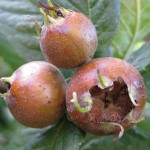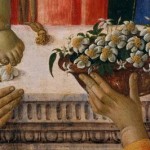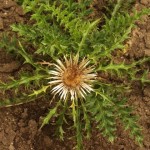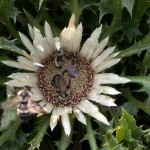Rotten-ripe: The Medlar Goes Soft
Left: Medlar in fruit below the west wall of Bonnefont Cloister Garden; right: a medlar tree in a detail from the tapestry The Unicorn is Found. Learn more about the Unicorn tapestries.
Well into November, long after other autumnal fruits have fallen to the ground, the small greenish-brown fruits of the medlar tree (Mespilus germanica) cling to its crooked boughs.??The fruit??is not harvested until the leaves fall,??when the??medlars can be easily plucked, although they are still too hard and??acerbic to be eaten out of hand.??Experts differ as to whether exposure to a few degrees of frost, which does the fruit no harm,??is??important to the long ripening process to come.??Once gathered, the fruits are placed stem-side down??in straw and??stored in a cool, dark place for several weeks until they are rotten-ripe and the pulp has turned into a delicious mush???a process known as bletting.??(Lee Reich, Uncommon Fruits Worthy of Attention, 1992).?? Read more »






